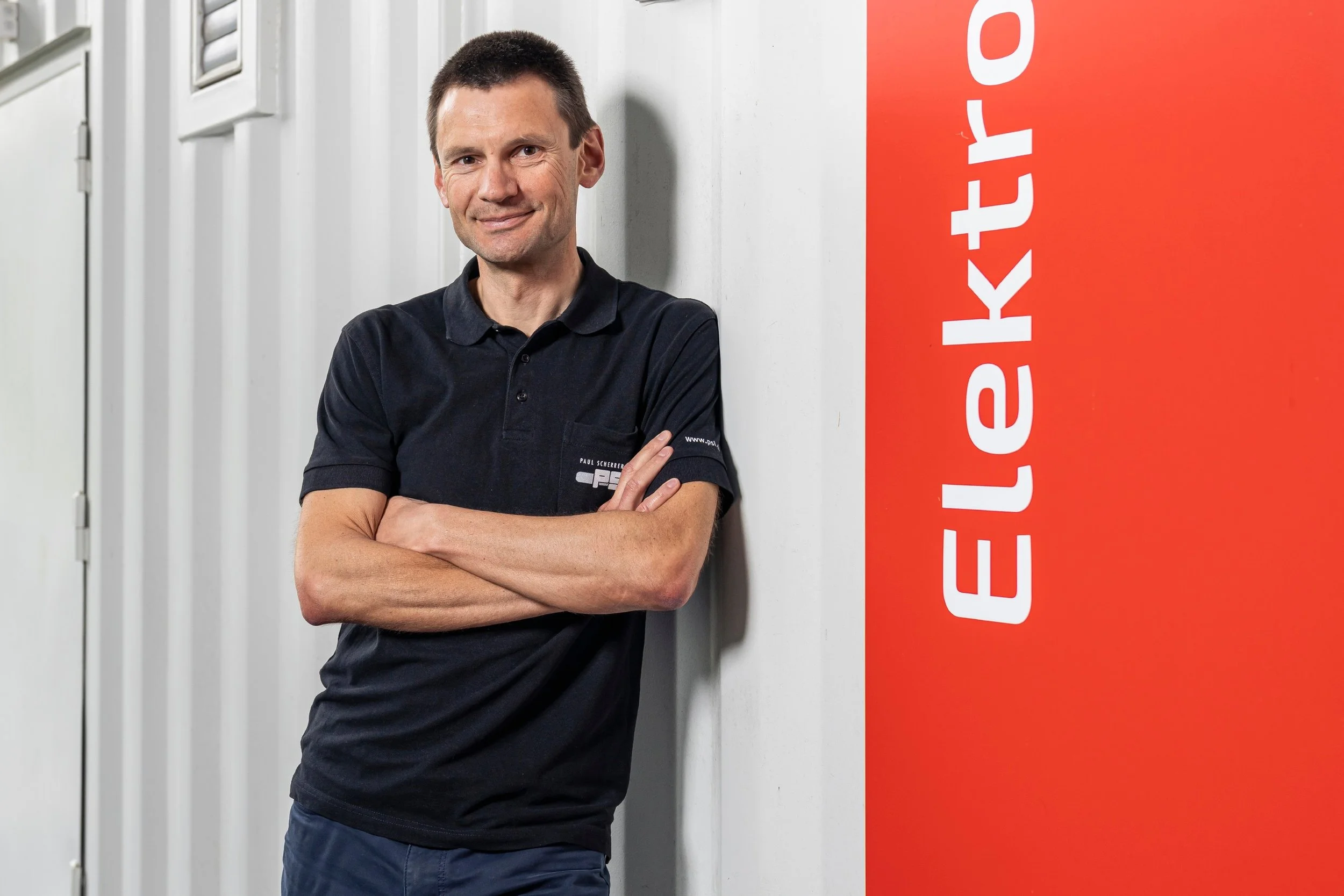Climate-neutral air travel: Is it possible?
Researchers at the Paul Scherrer Institute PSI and ETH Zurich have performed calculations to work out how air traffic could become climate-neutral by 2050. They conclude that simply replacing fossil aviation fuel with sustainable synthetic fuels will not be enough. Air traffic would also have to be reduced. The researchers are publishing their results today in the journal Nature Communications.
By Jan Berndorff
The European Union aims to be climate neutral by 2050, a target that was set by the European Parliament in 2021. Switzerland is pursuing the same goal. The aviation sector, which is responsible for 3,5 percent of global warming, is expected to contribute its fair share – especially since the greenhouse gas emissions of aircraft are two to three times higher per passenger or freight kilometre than in other transport sectors. The International Civil Aviation Organisation (ICAO) and many airlines have therefore announced their intention to reduce CO2 emissions to zero by 2050 or to become climate neutral.
In a new study, researchers at PSI and ETH Zurich have now calculated whether this can be achieved, and how. «An important question is what exactly we mean by zero carbon or climate neutrality,”» says Romain Sacchi of PSI’s Laboratory for Energy Systems Analysis, one of the study’s two lead authors. If this is only referring to the CO2 emitted by aircraft actually in the air, adds his co-author Viola Becattini from ETH Zurich, this does not go nearly far enough. Because assuming that air traffic continues to grow as it has in the past, the calculations predict that the CO2 emissions of aircraft will only account for about 20 percent of their total climate impact by 2050. In order to make aviation as a whole climate neutral, it is necessary to ensure that not only flying but also the production of fuel and the entire aviation infrastructure have no further impact on the climate.
The aviation sector is responsible for 3,5 percent of global warming. Credit: Carlos Pernalete Tua
However, the study concludes that this cannot be achieved by 2050 using the climate measures that are currently being pursued in flight operations. «New engines, climate-friendly fuels and filtering CO2 out of the atmosphere in order to store it underground (carbon capture and storage, or CCS) will not get us there on their own,» says Marco Mazzotti, Professor of Process Engineering at ETH. «On top of this, we need to reduce air traffic.»
Non-CO2 effects play a major role
In their study, Sacchi and Becattini looked at various different scenarios. These showed, on the one hand, that while the climate impact of the infrastructure, i.e. manufacturing aircraft and building and operating airports, does need to be taken into account, it is comparatively small overall for the period up until 2050 and beyond. The impact of flying itself on the climate, and of the emissions from producing the fuel are far greater. That in itself was nothing new.
What had been less clear before was the importance of so-called non-CO2 effects, which occur in addition to CO2 emissions. The bulk of the greenhouse effect caused by aviation is not due to the carbon released into the atmosphere by burning aviation fuel, but to the particulate matter (soot) and nitrogen oxides that are also released and that react in the air to form methane and ozone, water vapour and the condensation trails that lead to the formation of cirrus clouds in the upper atmosphere. «Many analyses and ‘net zero’ pledges so far have ignored these factors,” says Romain Sacchi. “Or they have not been calculated correctly.»
It is customary to express emissions and effects like these in terms of CO2 equivalents when calculating the overall balance. «But the methods and values used to date have proved to be inappropriate,» says Marco Mazzotti. «We therefore adopted a more precise approach.» The methods they used take into account one major difference between the various factors: non-CO2 effects are much more short-lived than CO2, which is why they are also called short-lived climate forcers, or SLCFs for short. While about half of the emitted carbon dioxide is absorbed by forests and oceans, the other half remains in the air for thousands of years, dispersing and acting as a greenhouse gas. Methane, on the other hand, has a much greater impact on the climate, but decomposes within a few years; contrails and the resulting clouds dissipate within hours. «The problem is that we are producing more and more SLCFs as air traffic increases, so these are adding up instead of disappearing quickly. As a result, they exert their enormous greenhouse impact over longer periods of time,» says Viola Becattini. It’s like a bathtub with both the drain and the tap open: as long as the tap lets in more water than can escape through the drain, the bathtub will keep getting fuller – until eventually it overflows.
Climate-friendly fuel alone does not achieve the goal – but it helps
«But this analogy also demonstrates that the crucial lever is under our control: the volume of air traffic,» Romain Sacchi points out. «By flying less instead of more often, in other words closing the tap instead of opening it, we can actually cool the atmosphere and push the greenhouse effect caused by aviation towards zero.» This is not to say that we must stop flying altogether. The calculations performed in the study show that for aviation to achieve climate neutrality by 2050, air traffic will need to be reduced by 0,8 percent every year – in conjunction with underground carbon dioxide storage – if we continue to use fossil fuels. This would bring it down to about 80 percent of today’s volume by 2050. If we manage to switch to more climate-friendly fuels based on electricity from renewables, 0,4 percent per year will be sufficient.
The study also took a closer look at these new fuels. Researchers around the world are working to replace conventional petroleum-based engines. As in road transport, this could be achieved by using electric batteries, fuel cells or the direct combustion of hydrogen. However, the available energy density is only sufficient for small aircraft on short routes, or in the case of hydrogen also for medium-size planes on medium-haul flights. Yet large aircraft on long-haul flights of more than 4.000 kilometres account for the majority of global air traffic and greenhouse gas emissions from aviation.
Credit: dmncwndrlch
Synthetic aviation fuel has pros and cons
In addition, propulsion technologies for the aviation industry based on electricity or hydrogen are far from being ready for a widespread roll-out. So-called Sustainable Aviation Fuel (SAF) is therefore viewed as the industry’s great hope. This man-made aviation fuel could replace petroleum-based aviation fuel more or less one-to-one, without the need to redesign turbines and aircraft.
SAF can be produced from CO2 and water via a production cascade. The CO2 is extracted from the air using a process known as air capture, and hydrogen can be obtained from water by electrolysis. «If the necessary processes are carried out entirely using renewable energy, SAF is virtually climate-neutral,» says Christian Bauer from the PSI Laboratory for Energy Systems Analysis, who was involved in the study. «This makes us less dependent on fossil fuels.»
Another advantage of SAF is that it produces fewer SLCFs, which would have to be offset by capturing equivalent amounts of CO2 from the air and storing them underground. This is significant because CO2 storage capacity is limited and not reserved exclusively for the aviation industry.
Viola Becattini is a researcher at ETH Zurich’s Institute of Energy and Process Engineering. Credit: Viola Becattini.
SAF also has certain disadvantages though, in that it takes far more energy to produce than conventional aviation fuel. This is mainly because producing hydrogen via electrolysis takes a lot of electricity. In addition, energy is lost at every step in the production process – air capture, electrolysis and synthesisation. Using large amounts of electrical power, in turn, means expending more resources such as water and land. SAF is also expensive: not just in terms of the electrical power required, but also the cost of carbon capture and electrolysis plants, which makes it four to seven times more expensive than conventional aviation fuel.
In other words, the widespread use of SAF makes carbon-neutral aviation a possibility, but it also costs more resources and more money. This means that flying will have to become even more expensive than it already needs to be in order to meet the climate targets. «Anyone buying a ticket today can pay a few extra euros to make their flight supposedly carbon neutral, by investing this money in climate protection,” says Romain Sacchi. “But this is greenwashing, because many of these measures for offsetting carbon are ineffective. To fully offset the actual climate impact, tickets would have to cost about three times as much as they do today.»
Christian Bauer, scientist at the PSI Laboratory for Energy Systems Analysis. Credit: Paul Scherrer Institute/Markus Fischer)
«Such a hefty price hike should significantly reduce the demand for flights and bring us closer to the goal of climate neutrality,» says Viola Becattini. In addition, SAF production is expected to become cheaper and more efficient over the years as quantities increases, and this will have a positive effect on the carbon footprint. The study took such dynamics into account – including the fact that the electricity mix used to produce SAF is shifting. This distinguishes the analysis from most others.
«The bottom line is that there is no magic bullet for achieving climate neutrality in aviation by 2050,» says Sacchi. «We cannot continue as before. But if we develop the infrastructure for storing CO2 underground and producing SAF quickly and efficiently, while also reducing our demand for air travel, we could succeed.»
Provided by Paul Scherrer Institute PSI





